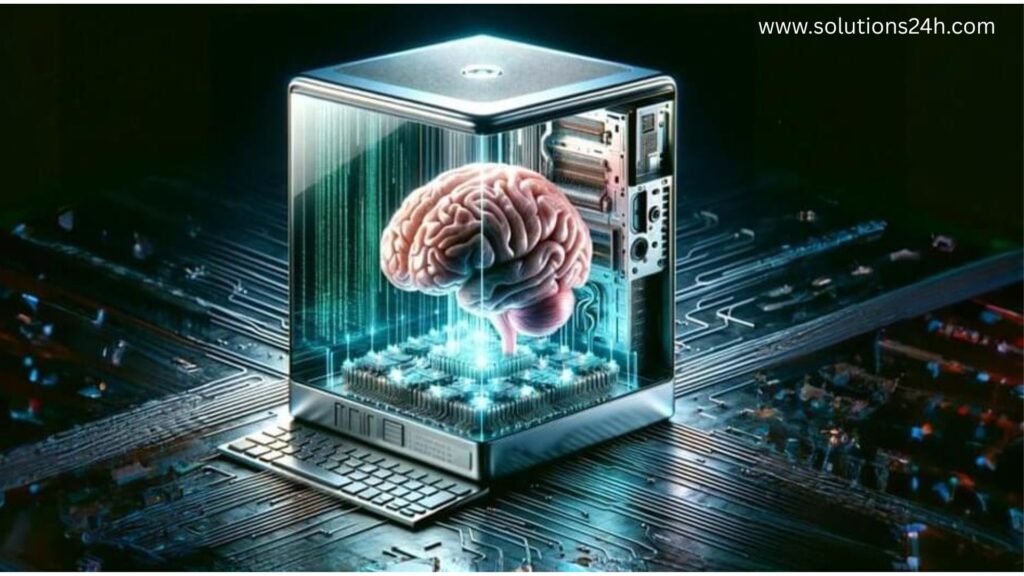Picture this: your smartphone processing information exactly like your brain does, consuming barely any power while handling complex tasks in real-time. Sounds like science fiction? Welcome to the world of neuromorphic chips – the breakthrough technology that’s making this reality possible.
What Are Neuromorphic Chips and Why Should You Care?
Neuromorphic computing represents a fundamental shift from traditional digital processing. Instead of following the rigid binary logic that’s powered computers for decades, these brain-inspired processors mimic the neural networks found in biological brains. Think of them as artificial neurons that communicate through electrical spikes, just like the 86 billion neurons firing in your head right now.
The magic lies in their architecture. While conventional processors separate memory and processing units (creating the infamous “von Neumann bottleneck”), neuromorphic chips integrate both functions within the same circuit. This design mirrors how our brain’s synapses simultaneously store and process information, eliminating the energy-hungry data shuffling that plagues traditional computers.
The Power Efficiency Game-Changer
Here’s where things get really exciting. Your brain operates on roughly 20 watts of power – about the same as a dim light bulb. Yet it can recognize faces, process emotions, make complex decisions, and store decades of memories simultaneously. Traditional AI systems performing similar tasks often require thousands of watts and massive cooling systems.
Neuromorphic processors bridge this efficiency gap dramatically. Intel’s Loihi chip, for example, can perform certain AI tasks using 1000 times less energy than conventional processors. This isn’t just impressive on paper – it’s revolutionary for battery-powered devices, autonomous vehicles, and IoT sensors that need to operate for years without charging.
Real-World Applications That Will Blow Your Mind
Autonomous Vehicles Getting Smarter Imagine self-driving cars that react to unexpected situations as quickly as human drivers, but without the massive computational overhead. Neuromorphic chips can process visual data from cameras in real-time, identifying pedestrians, reading traffic signs, and making split-second decisions while consuming minimal battery power.
Healthcare Revolution Prosthetic limbs controlled by thought alone are becoming reality thanks to neuromorphic interfaces. These chips can decode neural signals from amputees’ residual nerves, translating intentions into precise mechanical movements. Brain-computer interfaces for treating depression, epilepsy, and Parkinson’s disease are also advancing rapidly.
Smart Cities of Tomorrow Traffic management systems powered by neuromorphic processors can adapt to real-time conditions, optimizing traffic flow while learning from patterns. Security cameras become intelligent enough to distinguish between normal activities and genuine threats without sending every frame to energy-hungry cloud servers.
Edge AI Revolution Your smartphone camera could soon identify objects, translate languages, and enhance photos using on-device neuromorphic processing. No more waiting for cloud connectivity or worrying about privacy – the AI runs locally with minimal battery drain.
The Technology Behind the Magic
Neuromorphic chips use several breakthrough approaches:
Spiking Neural Networks: Unlike traditional neural networks that process continuous values, these chips communicate through discrete electrical spikes, mimicking how biological neurons fire. This event-driven approach means processing only happens when needed, dramatically reducing power consumption.
Memristive Devices: These components can remember their resistance state even when power is removed, combining memory and processing in a single element. They’re essentially artificial synapses that can strengthen or weaken connections based on usage patterns.
Asynchronous Processing: Instead of following rigid clock cycles like traditional processors, neuromorphic chips process information as it arrives. This eliminates unnecessary computational cycles and enables real-time responses to environmental changes.
Current Market Leaders and Innovations
Intel’s Loihi Family: Leading the charge with their research-focused processors that have already demonstrated remarkable efficiency in robotics and sensory processing applications.
IBM’s TrueNorth: One of the pioneers in the field, designed specifically for pattern recognition and sensory processing tasks.
BrainChip’s Akida: The first commercial neuromorphic processor available to developers, focusing on edge AI applications.
Startup Innovation: Companies like SynSense, GrAI Matter Labs, and Rain Neuromorphics are pushing boundaries with specialized neuromorphic solutions for specific industries.
Challenges and Future Outlook
Despite the excitement, neuromorphic computing faces real hurdles. Programming these brain-inspired systems requires entirely new software approaches. Traditional programming languages and frameworks don’t translate well to spiking neural networks.
Manufacturing consistency remains challenging. Creating billions of artificial synapses with precise, repeatable characteristics pushes semiconductor fabrication to its limits. The industry is still developing standardized development tools and programming frameworks.
However, the potential rewards justify these challenges. Market analysts predict the neuromorphic chip market will reach $6.4 billion by 2029, driven by exploding demand for edge AI, autonomous systems, and ultra-low-power computing.
What This Means for You
The neuromorphic revolution isn’t just about faster computers – it’s about fundamentally changing how we interact with technology. Your future devices will be more intuitive, responsive, and energy-efficient. They’ll learn your preferences, adapt to your behavior, and operate for weeks on a single charge.
Professional developers and engineers should start familiarizing themselves with neuromorphic programming concepts. Universities are beginning to offer specialized courses, and major tech companies are investing heavily in talent acquisition for this field.
Conclusion
Neuromorphic chips represent more than incremental improvement – they’re a paradigm shift toward computing that truly mimics biological intelligence. As these processors become more mainstream, we’ll see unprecedented advances in robotics, healthcare, autonomous systems, and personal devices.
The brain-inspired computing revolution has begun, and early adopters will have significant advantages in the AI-driven economy of tomorrow. Whether you’re a tech enthusiast, investor, or simply curious about the future, neuromorphic chips deserve your attention.
The question isn’t whether this technology will transform computing – it’s how quickly you’ll adapt to the opportunities it creates.



